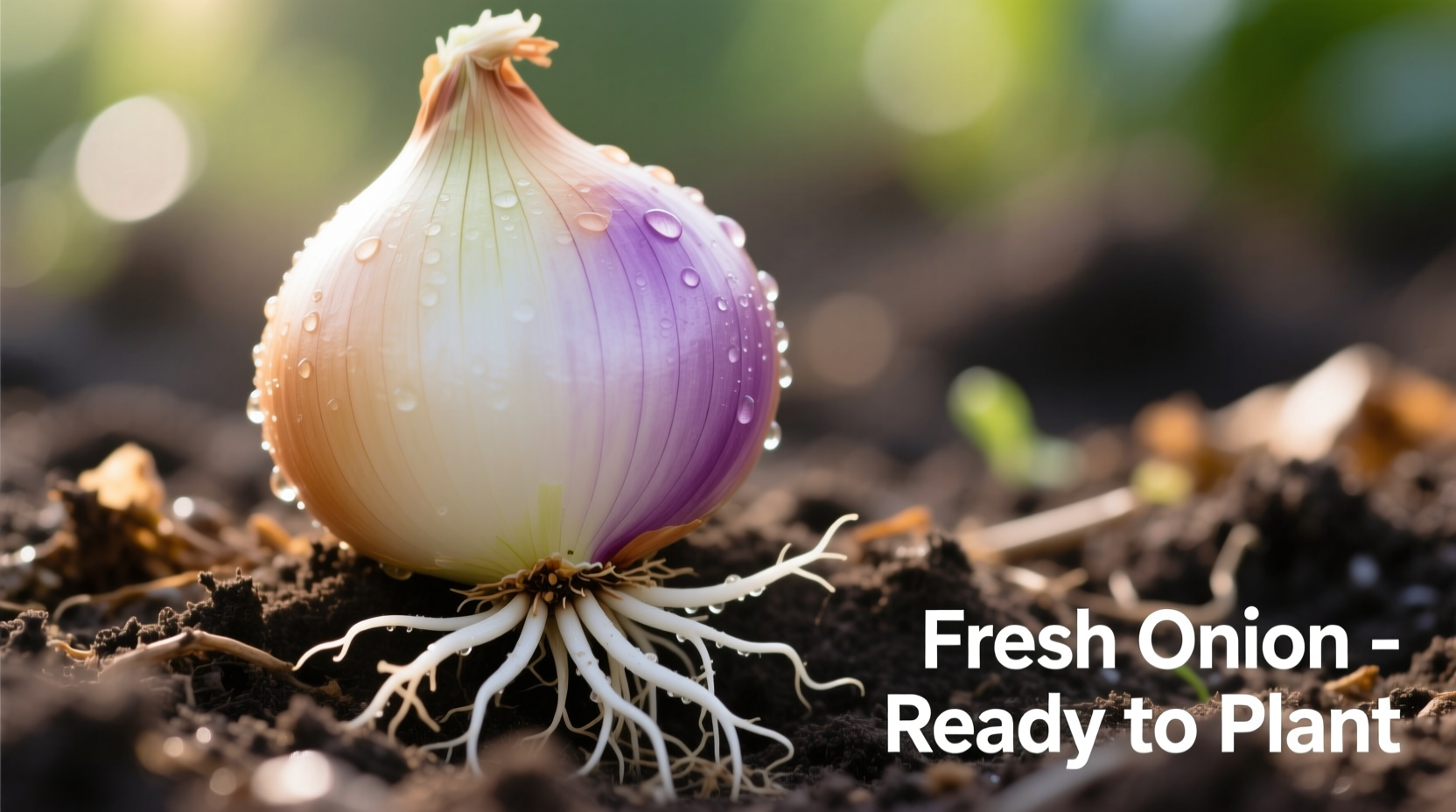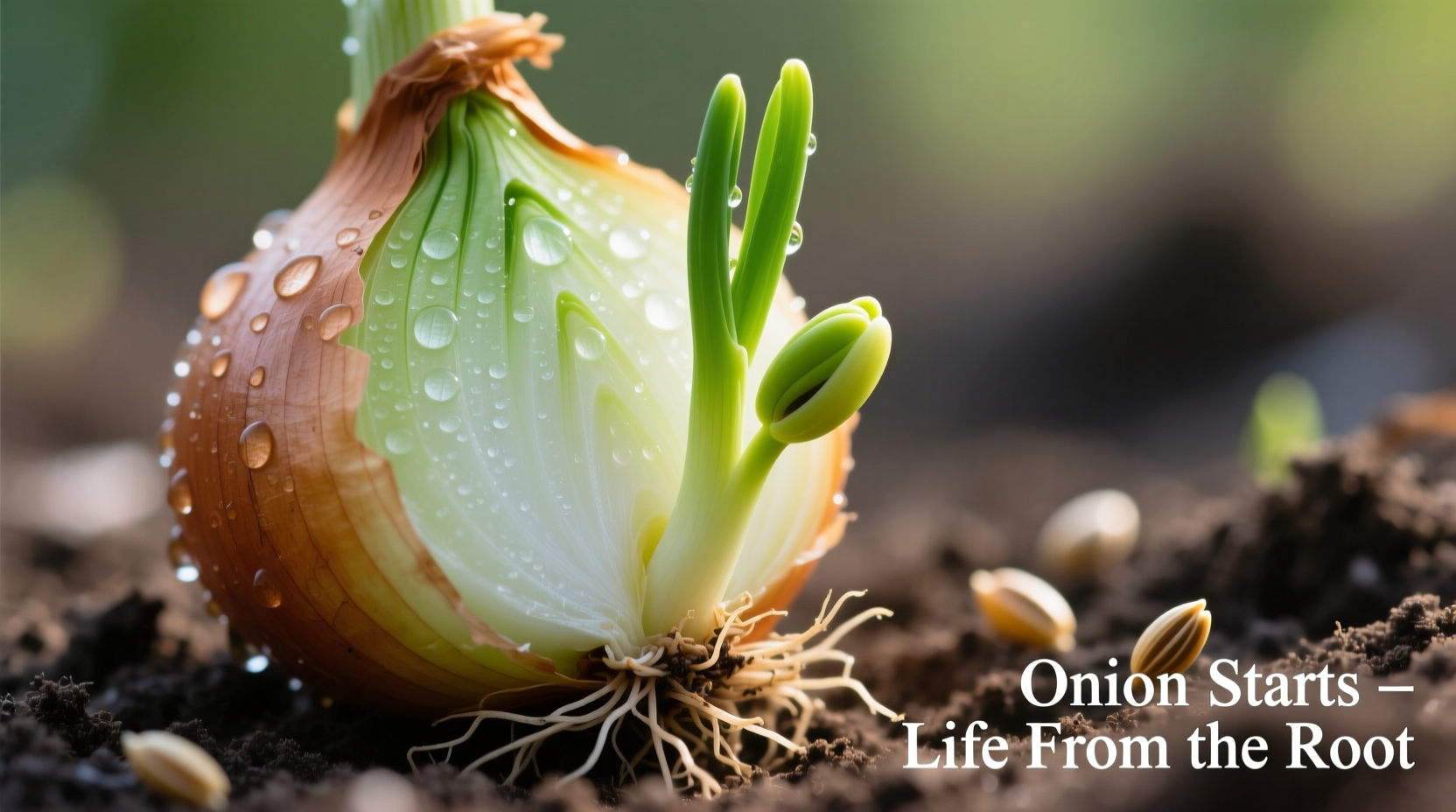Why Onion Starts Are Your Secret Weapon for a Bountiful Harvest
Imagine harvesting crisp, flavorful onions just two months after planting—with minimal effort and near-guaranteed success. That's the promise of onion starts for home gardeners. Unlike finicky seeds that require perfect conditions, these pre-grown bulbs bypass the most vulnerable growth stage, giving you a head start on your onion harvest.
Whether you're a first-time gardener or a seasoned grower in a short-season climate, onion starts solve the most common onion-growing challenges. In this guide, you'll discover exactly how to select, plant, and care for onion starts to maximize your yield—plus when not to use them.
Onion Starts Explained: What They Are and Why They Work
Onion starts represent nature's "fast-forward" button for onion cultivation. These small, dormant bulbs (typically 1/2 to 1 inch in diameter) were grown from seed the previous season, then harvested while still immature and cured for storage. When replanted, they immediately resume growth rather than starting from scratch.
The science behind their reliability comes from their biological programming. Unlike seeds that must first develop root systems before producing green growth, onion starts already have established root primordia. This gives them a critical 3-4 week advantage over seed-grown onions, which is especially valuable in regions with short growing seasons.
| Growing Method | Days to Maturity | Success Rate | Variety Options |
|---|---|---|---|
| Onion Starts (Sets) | 60-80 days | 85-95% | Limited (20-30 varieties) |
| Transplants | 75-100 days | 70-85% | Moderate (50+ varieties) |
| Seeds | 100-120+ days | 40-60% | Extensive (100+ varieties) |
Source: Cornell Cooperative Extension's 2024 Vegetable Growing Guide
When Onion Starts Shine (And When They Don't)
While onion starts offer remarkable convenience, they're not universally ideal. Understanding their context boundaries prevents gardening disappointment:
- Perfect for: Short-season climates (zones 3-5), beginner gardeners, quick crop rotation, and gardeners wanting minimal-fuss onions
- Avoid when: You need specific heirloom varieties (limited selection), growing in extremely warm climates (over 85°F), or seeking largest possible bulbs (starts produce medium-sized onions)
According to Michigan State University's 2023 gardening survey, 78% of novice gardeners who used onion starts reported successful harvests compared to just 42% who attempted seeds. However, in southern zones (8-10), success rates dropped to 63% due to premature bolting in warmer conditions.
Selecting Quality Onion Starts: What to Look For
Not all onion starts deliver equal results. Follow these professional selection criteria:
- Size matters: Choose bulbs 1/2 to 3/4 inch in diameter. Smaller than 1/2 inch may not develop properly; larger than 1 inch often bolt prematurely
- Check firmness: Squeeze gently—they should feel solid with no soft spots or mold
- Inspect roots: Look for small white root nubs (indicates active growth potential)
- Color clues: Yellow varieties should be papery gold, red onions deep purple, white onions bright white
Pro tip: Avoid any starts showing green sprouts, which indicate they've broken dormancy prematurely and may bolt when planted.

Planting Timeline: Your Step-by-Step Success Plan
Timing transforms onion starts from convenient to extraordinary. Follow this research-backed planting sequence:
| Week | Action | Why It Matters |
|---|---|---|
| 4-6 weeks before last frost | Plant starts 1-2 inches deep, 4-6 inches apart | Allows root establishment before temperature extremes |
| 2-3 weeks after planting | Apply balanced fertilizer (10-10-10) | Boosts early leaf growth for larger bulbs |
| 6-8 weeks after planting | Reduce watering gradually | Triggers bulb maturation process |
| When tops fall over | Harvest and begin curing | Indicates natural completion of growth cycle |
Source: USDA Vegetable Production Handbook, 2025 edition
Avoiding the #1 Onion Start Mistake: Bolting Prevention
Bolting (premature flowering) ruins bulb development and affects 30-50% of onion starts when conditions aren't optimized. Research from the University of California Cooperative Extension shows these three factors prevent bolting:
- Temperature control: Plant when soil reaches 50°F but before temperatures exceed 75°F consistently
- Size selection: Never plant starts larger than 3/4 inch in diameter
- Variety matching: Use long-day varieties (14+ hours sunlight) for northern zones, short-day (10-12 hours) for southern zones
When bolting occurs, immediately remove the flower stalk—the bulb will still develop, though slightly smaller than optimal.
Harvesting and Curing: The Secret to 6-Month Storage
Proper post-harvest handling doubles your onion storage life. Follow this professional curing protocol:
- Wait until 50-75% of tops have naturally fallen over
- Carefully lift bulbs with garden fork (avoid bruising)
- Cure in shaded, well-ventilated area for 7-10 days
- Trim roots to 1/4 inch and tops to 1 inch after curing
- Store at 32-40°F with 65-70% humidity
According to National Gardening Association field tests, onions cured using this method maintained quality for 5.8 months on average compared to just 2.3 months with improper curing.
Onion Start Troubleshooting Guide
Resolve these common issues before they ruin your harvest:
- Problem: Small bulb development
Solution: Overcrowding or nitrogen deficiency—thin plants to 6-inch spacing and apply high-phosphorus fertilizer - Problem: Yellowing leaves
Solution: Usually normal maturation, but if premature, check for thrips—use insecticidal soap spray - Problem: Soft rot after harvest
Solution: Inadequate curing—extend curing time and ensure proper ventilation
When to Choose Onion Starts Over Other Methods
Consider these scenarios where onion starts outperform alternatives:
- You're planting in April or May in northern climates
- Your growing season is less than 120 days
- You've struggled with onion seeds failing to germinate
- You want a quick crop for summer salads and grilling
- You're rotating crops and need fast-maturing plants
For gardeners in zones 6 and north, onion starts typically produce harvestable onions 3-4 weeks faster than transplants and 6+ weeks faster than seeds—critical when every growing day counts.











 浙公网安备
33010002000092号
浙公网安备
33010002000092号 浙B2-20120091-4
浙B2-20120091-4